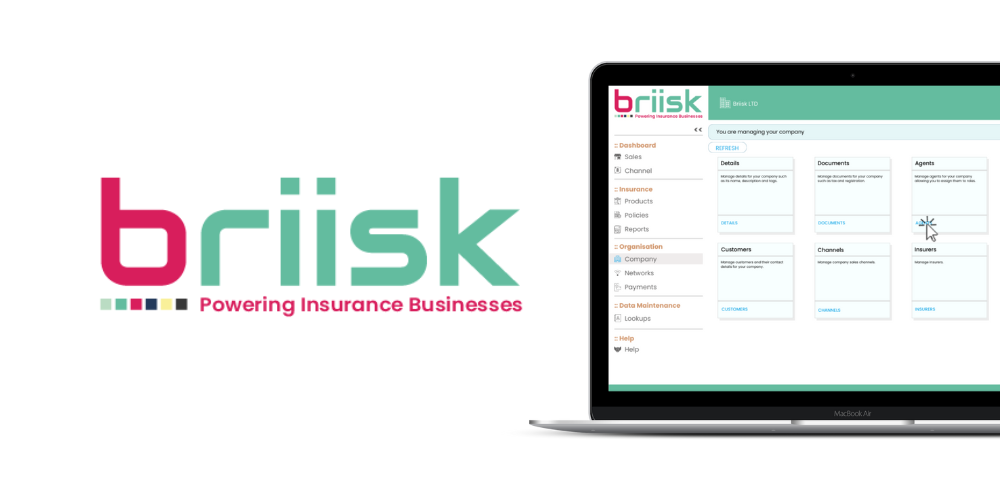The insurance industry is rapidly evolving, and customer expectations for fast, seamless service are higher than ever. Chatbots have become an essential tool for insurers to improve efficiency, enhance customer experience, and reduce costs. However, not all chatbots are the same. Businesses can leverage three distinct types—scripted chatbots, generative AI chatbots, and agentic AI chatbots—each with its own strengths and ideal use cases.
Here’s how insurance companies can strategically use these chatbot types to optimise their operations and improve customer satisfaction.
Scripted chatbots: The rule-based assistants
Scripted chatbots operate on predefined workflows and decision trees. They follow a structured approach, responding based on fixed scripts and keyword recognition. They work on a “if that, then this” process; if they do not recognise a keyword within a query or question, there will be no output.
Scripted chatbots are ideal for handling straightforward, repetitive tasks where responses are predictable.
- Policy information & FAQs: Customers can quickly check their policy details, coverage, or payment due dates.
- Basic lead generation: The chatbot can collect customer details and pass them to sales teams.
- Simple policy quotes: A customer can receive a quick estimate for standard insurance policies based on predefined inputs.
Benefits:
✅ Highly reliable and predictable responses
✅ Easy to implement and maintain
✅ Ensures compliance by following strict guidelines
Limitations:
❌ Cannot handle complex or ambiguous queries
❌ Requires frequent manual updates for new scenarios
Generative AI Chatbots: The conversational experts
These chatbots use machine learning models (like ChatGPT) to generate human-like responses. Using knowledge sources input by the business (such as FAQs, policy documentation, website links). They analyse customer inputs and craft natural, context-aware replies rather than relying on fixed scripts.
Generative AI chatbots excel in situations requiring flexibility and personalised interactions.
- Advanced customer support: Instead of rigid FAQ responses, customers can receive more nuanced answers tailored to their specific queries.
- Personalised policy recommendations: The chatbot can analyse customer inputs (e.g., income, risk factors, coverage needs) and suggest tailored policies.
- Claims assistance: Customers can ask open-ended questions about claims processes, and the chatbot can guide them through how to submit a claim conversationally.
Benefits:
✅ Delivers a more natural, engaging customer experience
✅ Handles a broader range of queries without predefined scripts
✅ Reduces strain on human agents by answering complex questions
Limitations:
❌ Responses may vary in accuracy, requiring oversight
❌ Compliance risks if not carefully trained to follow regulations
Agentic AI chatbots: The autonomous decision-makers
Agentic AI goes beyond responding to queries—it takes actions on behalf of the customer or the insurer. These chatbots integrate with business systems to execute multi-step processes autonomously, from multiple channels, sources and software systems.
Agentic AI chatbots are perfect for automating tasks that require decision-making and system interaction.
- Automated claims processing: Customers can submit claims, upload documents, and have their claims processed end-to-end without human intervention.
- Policy management: Customers can modify coverage, update beneficiaries, or renew policies directly through the chatbot.
- Appointment scheduling: The chatbot can book consultations with human agents based on availability.
- Regulatory compliance checks: The AI can verify customer details against compliance requirements before proceeding with policy approvals.
Benefits:
✅ Fully automates complex workflows
✅ Improves operational efficiency and reduces costs
✅ Enhances customer convenience by handling requests in real time
Limitations:
❌ Requires deep system integration and robust security measures
❌ Higher initial setup and maintenance costs\
How insurance can combine these chatbots for maximum impact
To get the most out of chatbot technology, insurance companies should adopt a hybrid approach, leveraging the strengths of each type:
- Use scripted chatbots for handling FAQs, basic inquiries, and structured workflows.
- Deploy generative AI chatbots to provide dynamic, personalised customer support and recommendations.
- Implement agentic AI chatbots to automate end-to-end processes, reducing human intervention in policy management and claims processing.
An example of a seamless customer journey
Imagine a customer wants to update their car insurance policy:
- Scripted chatbot confirms policy details and eligibility for modification.
- Generative AI chatbot answers the customer’s questions about policy options and advises on coverage levels.
- Agentic AI chatbot executes the policy update, generates new documents, and processes the information across systems—all within the same chat session.
This layered approach ensures efficiency, accuracy, and a smooth customer experience.
Keep in mind that with all these types of chatbots, you’ll need a distribution channel – or what you might hear called conversational channels; from channels like WhatsApp or Live Chat on your website to Facebook or Instagram messenger. Your channel choice is dependent on the type of audience you are planning to communicate with and the subject of the conversation, certain channels feel more secure to the user than others.
Know your use case
The insurance industry can greatly benefit from chatbot technology, but choosing the right type for your use case is key. Scripted chatbots handle structured, routine tasks; generative AI chatbots enhance customer interactions with flexibility; and agentic AI chatbots bring automation to a whole new level.
By combining these technologies, insurers can improve customer satisfaction, streamline operations, and stay ahead in an increasingly digital landscape.
Ready to revolutionise your insurance business with AI-powered chatbots? The future of customer engagement is here—don’t get left behind.


